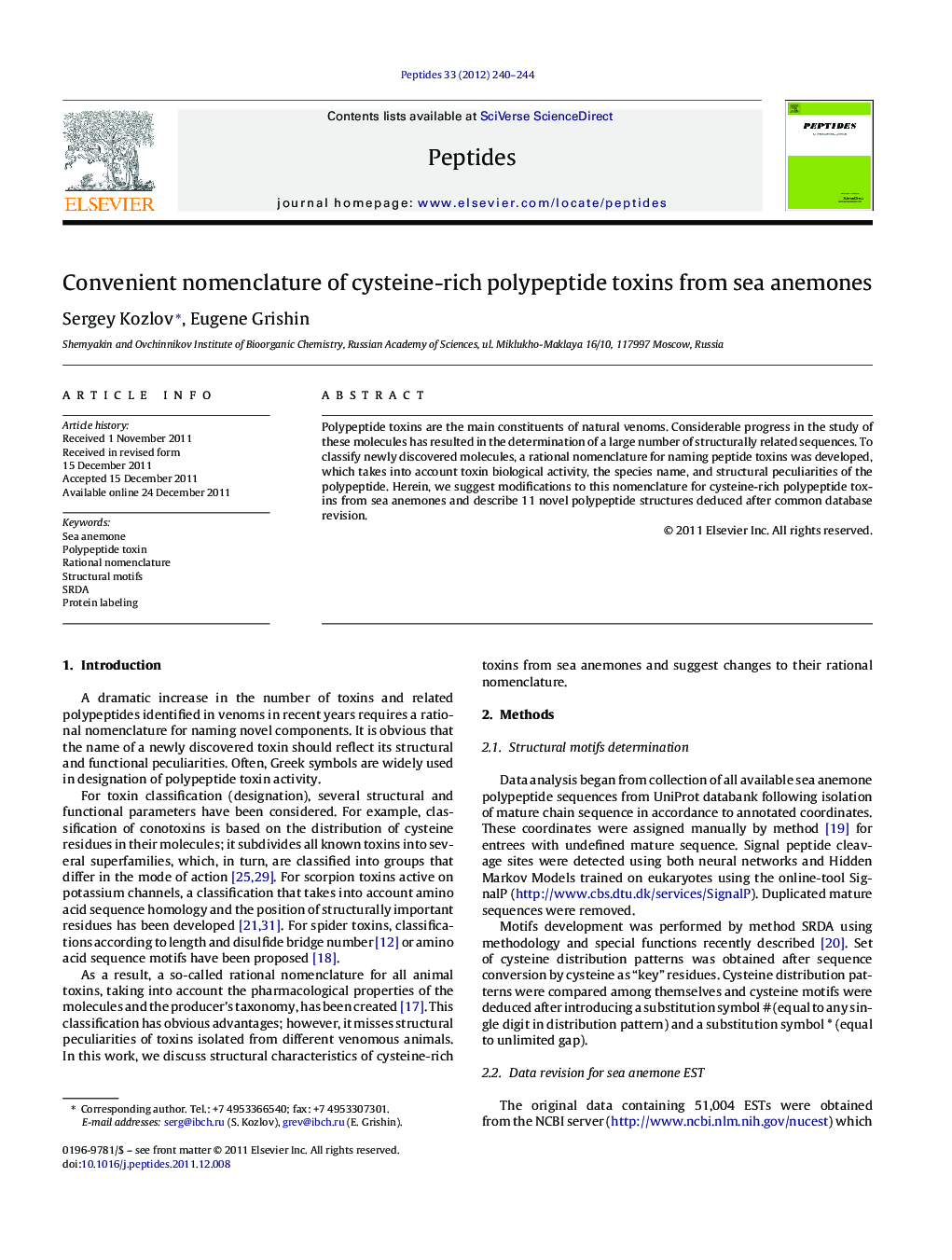| Article ID | Journal | Published Year | Pages | File Type |
|---|---|---|---|---|
| 2006316 | Peptides | 2012 | 5 Pages |
Polypeptide toxins are the main constituents of natural venoms. Considerable progress in the study of these molecules has resulted in the determination of a large number of structurally related sequences. To classify newly discovered molecules, a rational nomenclature for naming peptide toxins was developed, which takes into account toxin biological activity, the species name, and structural peculiarities of the polypeptide. Herein, we suggest modifications to this nomenclature for cysteine-rich polypeptide toxins from sea anemones and describe 11 novel polypeptide structures deduced after common database revision.
► Considerable progress in the study of polypeptide toxins resulted in determination of a large number of structurally related sequences. ► So-called rational nomenclature has obvious advantages; however it misses structural peculiarities of toxins. ► We suggest modifications to this nomenclature for cysteine-rich polypeptide toxins identified from sea anemones. ► Cysteine-rich polypeptides may be classified into several structural classes on the basis of specific arrangement of cysteine residues. ► Using this specific arrangement or structural motifs for screening sea anemone EST databases we identified 11 novel toxins.
